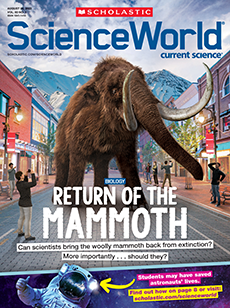There's a good chance you’ve come across this internetfamous animal while browsing social media. It’s a frilly salamander called an axolotl (AK-suh-lah-tuhl) that some say resembles a reallife Pokémon. On TikTok, videos of people showing off their pet axolotls have racked up billions of views. Axolotl characters even make appearances in video games like Minecraft and Fortnite. What’s behind this unusual animal’s popularity? “Axolotls are really cute,” says Jessica Whited, a molecular biologist at Harvard University in Massachusetts. “They seem to always have a smile on their face.”
Axolotls have such cute features because they are neotenic. As they age and get bigger, they retain characteristics of their juvenile form (see Life of an Axolotl). “Axolotls are like Peter Pan!” says Diana Laura Vázquez Mendoza, a graduate student studying ecology at the Universidad Nacional Autónoma de México (UNAM). They never seem to grow up. “Despite being an adult, the axolotl never stops looking like a tadpole.”
You’ve probably seen this internet-famous animal on social media. It’s a frilly salamander called an axolotl (AK-suh-lah-tuhl). Some say it looks like a real-life Pokémon. On TikTok, people are showing off their pet axolotls. Their videos have racked up billions of views. Axolotl characters even appear in video games like Minecraft and Fortnite. Why is this unusual animal so popular? “Axolotls are really cute,” says Jessica Whited, a molecular biologist at Harvard University in Massachusetts. “They seem to always have a smile on their face.”
Axolotls look so cute because they are neotenic. As they age and get bigger, they keep their youthful features (see Life of an Axolotl). “Axolotls are like Peter Pan!” says Diana Laura Vázquez Mendoza. She’s a graduate student studying ecology at the Universidad Nacional Autónoma de México (UNAM). The animals never seem to grow up. “Despite being an adult, the axolotl never stops looking like a tadpole.”
